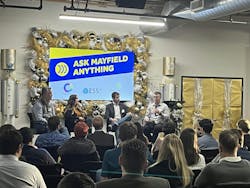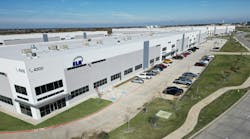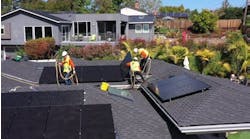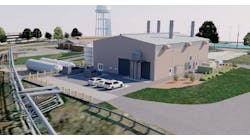Supply chain challenges and the need for software innovations are among the major impediments to transitioning to distributed energy resources (DERs) and microgrids, said a panel of industry players speaking at The Great Transformation, a forum held Dec. 12 in Beaverton, Oregon.
In addition, DERs need to be able to communicate with one another, utilities and energy aggregators. What’s more, the clean energy industry should focus on building a trained workforce, panelists said.
The event, presented by Mayfield Renwables and Crest Creative, in partnership with the Technology Association of Oregon, included clean tech speakers from flow battery maker ESS, Portland State University, battery provider Powan and Iridian, which helps raw materials companies get their products into batteries.
Important role of microgrids in the energy transition
Laurel Hamilton, general manager at Mayfield Renewables, stressed the importance of microgrids in the clean energy transition in an interview after the event.
"In the foreseeable future the demand for microgrids will continue to rise due to increasing weather events impacting our aging grid and the cost savings possible through resilient, closed local systems,” she said.
During the panel discussion, Robert Bass, who directs the Power Engineering Research Group at Portland State University, stressed the need for interoperability among various DERs.
Needed: Systems networked together
Utility customers, with their solar panels, energy storage, electric vehicles (EV) and appliances, can contribute power to the grid and also shift their power consumption in response to changes in the weather and their utilities’ needs. “In order to have that happen, you have to have systems that are networked together,” Bass said.
What’s needed is the ability to cheaply and quickly connect millions of DERs together. However, that’s more difficult than connecting a 200-MW power plant to a utility, he said.
Connecting the DERs requires creating standards that facilitate the information exchange from device to device.
For example, putting battery systems at every substation, commercial building or residence and having them provide grid services will require the systems to all work together in ways that are beneficial to the grid, Bass said.
How standards can speed the energy transition
Much of the work needed to facilitate interoperability will be done through standards bodies that include manufacturers, utilities and end users. For example, one standard is IEEE 1547, which regulates interconnectivity for inverters, said Bass.
The California Energy Commission has said that all inverters installed by utilities must speak one of three languages, including IEEE 2030.5, which addresses communications between the smart grid and consumers.
Inverters will be able to communicate using such standards, which means that as people start installing inverter-based DERs in their homes, they will have the ability to connect to a utility or aggregator.
Water heaters that can connect to utility programs
In another example, water heaters in Washington and Oregon must have an “ecoport” that meets American National Standards Institute standards and allows consumers to connect water heaters to utility programs such as demand response programs.
In general, however, not many standards have been created that aid this process. “We have a ways to go,” said Bass.
Eric Dresselhuys, CEO of battery provider ESS, noted that interoperability is important to his business.
“We built a battery as a system that is controlled by someone else’s third-party software. It has to communicate over a communications network of some sort. If we had to invent all of that, the pain threshold would be tremendous,” said Dresselhuys.
Diversification needed to solve supply chain challenges
Supply chain challenges are also an obstacle to the clean energy transition, said Shelly Whitlock, CEO of Iridian. An important way to address this obstacle is to focus on diversifying the materials required to deploy clean energy.
Energy storage is needed to help enable electrification efforts that are expected to triple the use of electricity, she said. But the industry is already experiencing shortages of materials throughout the supply chain.
“I really think the key is in diversifying a little bit and at least being flexible about what we are able to receive, especially since EVs are experiencing growth, which is also going to create a battery demand,” Whitlock said.
EV manufacturers have an edge buying batteries
Whitlock added that EV manufacturers are more likely than stationary storage providers to gain access to batteries first.
“The [EV manufacturers] just have a lot more money, a lot more businesses behind them in order to get those cells,” said Whitlock.
Options for diversifying the supply chain materials include using natural graphite instead of synthetic graphite in batteries. The natural form is less carbon-intensive, Whitlock said. And more mines are opening up in the U.S. as a result of the provisions of the Inflation Reduction Act.
Software innovation in the context of risk-averse utilities
Along with focusing on diversifying supply chain materials, the energy industry needs to concentrate on developing software, said Bass.
“We’re going to need a lot of innovation,” he said. “We need EVs to negotiate their price points and movement of energy. We need DERMS [distributed energy resource management systems] that can gather these things together and then turn them around and sell them as grid services. But we need software developers to do that.”
Some systems may need software that requires updates every two weeks, he said. But utilities may not be open to such updates, saying they can’t risk the downtime required to complete the updates.
“How are we going to create this innovation from the software industry and marry that with a utility industry that’s risk averse? I don't know how to answer that. It’s a very big challenge, from what I've seen,” said Bass.
Building a trained workforce for the clean energy industry
Yet another challenge is building a workforce whose members can design, install and maintain clean energy systems, said the panelists. Trained electricians are especially needed to install systems properly and safely.
Meanwhile, there’s an urgent need to speed up the transformation.
“Even though we’re massively growing renewables, the amount of fossil generation on a global basis is growing faster,” Dresselhuys said. “Folks, we’re losing. We have to pick up the pace.”








